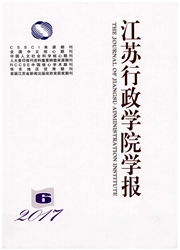

 中文摘要:
中文摘要:
政策协同是政府解决复杂问题的重要方式,但我国的“大户籍”政策改革却提出了政策“反协同”的独特问题。政策“反协同”因原有的政策协同存在负面作用以及与新的政策环境和政策目标不匹配而提出,其途径有“中心”突破、“外围”剥离和双向改革三种基本方法。“大户籍”政策改革提出的政策“反协同”问题意味着在社会发展和政府治理转型时期,我国的政策管理存在协同和“反协同”的双重任务。这要求决策者加强各领域政策“顶层设计”的科学性,注意国家政策结构和政策关系的合理安排和长远规划。
 英文摘要:
英文摘要:
Policy synergy is an important method for the government to solve complex problems, but China's reform of “big household registration” policy has posed a unique problem of policy “anti-synergy”. Such a problem generates nega- tive effects due to the original policy, and shows disparity with the new policy environment and policy objectives. The solu- tions can be found in three basic categories: "central" breakthrough, "peripheral" peeling, and two-way reform. The "an- ti-synergy" issue of policy against the backdrop of the reform of "big household registration" policy means that during the period of social development and transformation of government behavior, China's policy administration still faces the dual tasks of synergy and "anti-synergy". This requires the policy-makers to increase the scientific elements in "top design" of various aspects, and to pay attention to the reasonable arrangement and long-term planning for national policy framework and policy relationship.
 同期刊论文项目
同期刊论文项目
 同项目期刊论文
同项目期刊论文
 期刊信息
期刊信息
